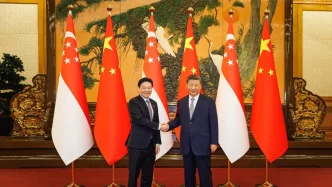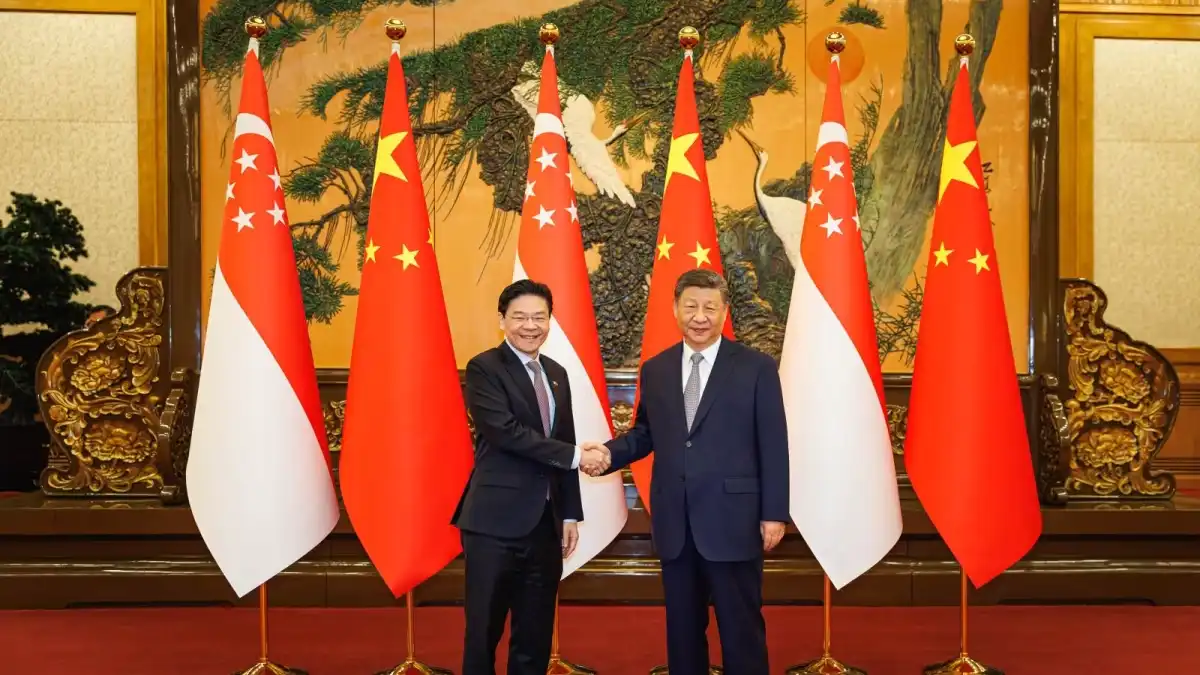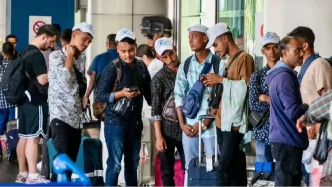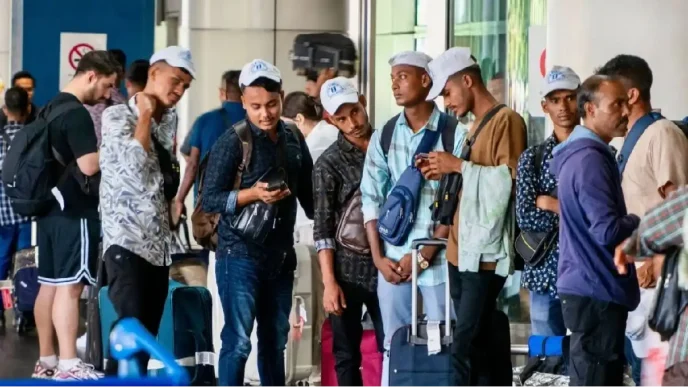In a significant meeting at the Great Hall of the People in Beijing on June 24, 2025, Chinese President Xi Jinping and Singaporean Prime Minister Lawrence Wong reaffirmed the deep ties between their nations, emphasizing the need for closer cooperation in a world marked by economic turbulence and geopolitical challenges. As PM Wong embarked on his first official visit to China since taking office, the discussions underscored a shared commitment to multilateralism, open trade, and regional stability.
A Partnership Rooted in History
The relationship between Singapore and China, which stretches back decades before the formal establishment of diplomatic ties 35 years ago, was a central theme of the meeting. PM Wong highlighted the foundational role played by historical figures such as the late Chinese leader Deng Xiaoping, whose 1978 visit to Singapore marked a turning point, and Singapore’s founding Prime Minister Lee Kuan Yew, who championed China’s reform and opening-up policies. These early interactions laid the groundwork for a partnership built on mutual respect and trust, a point reiterated by both leaders.
“President Xi is in a unique position, I think, to have engaged and met all the prime ministers of Singapore: Lee Kuan Yew, Goh Chok Tong, Lee Hsien Loong, and now me” said PM Wong, acknowledging the continuity in leadership engagement. Xi, in turn, congratulated Wong on Singapore’s recent General Election results and briefed him on China’s domestic and international priorities, signaling a desire for sustained dialogue at the highest levels.
Navigating a Turbulent Global Landscape
The Beijing meeting came at a time of heightened global uncertainty, with ongoing conflicts, economic disruptions, and the US imposition of steep tariffs on goods from various countries threatening the post-World War II global trade order. Against this backdrop, both leaders stressed the importance of a rules-based multilateral system to ensure stability and growth. “We can work together to establish closer ties and also to cooperate in regional and multilateral platforms, to continue to strengthen multilateralism and the rules-based global order for the benefit of all countries” said PM Wong.
Xi echoed this sentiment, emphasizing that the trend toward peace, development, and cooperation remains irreversible. “China is willing to work with Singapore to stand on the right side of history, and the side of fairness and justice” he said, as reported by Chinese state news agency Xinhua. He further called for a joint effort to promote an “equal and orderly multipolar world and inclusive economic globalization,” framing the partnership as a counterweight to hegemony and a return to the “law of the jungle” in international relations.
Strengthening Bilateral Cooperation
Beyond rhetoric, the leaders identified concrete areas for deepened collaboration. According to Singapore’s Ministry of Foreign Affairs (MFA), both sides welcomed progress in bilateral initiatives, particularly in emerging fields such as the digital and green economies. They also expressed a commitment to enhancing official and institutional linkages, as well as fostering people-to-people exchanges, which have long been a pillar of Singapore-China relations.
PM Wong’s decision to make China his first introductory visit outside Southeast Asia underscored the priority Singapore places on this partnership. “This reflects the close and steadfast partnership between Singapore and China” he told Xi, a sentiment reinforced by the upgraded bilateral relationship in 2023 to an “All-Round High-Quality Future-Oriented Partnership.” Chinese Foreign Minister Wang Yi, meeting with his Singaporean counterpart Vivian Balakrishnan on the same day, noted the lengthy name of the agreement as a reflection of the accumulated value of the two nations’ ties.
Regional and Cross-Strait Dynamics
The discussions also touched on sensitive regional issues, including developments across the Taiwan Strait. China views Taiwan as part of its territory, a stance rejected by the democratically governed island. PM Wong reiterated Singapore’s clear and consistent “one China” policy, affirming opposition to Taiwan independence—a position that aligns with Singapore’s long-standing approach to maintaining balance in its foreign relations.
Broader regional and global economic challenges were also on the agenda. Both leaders acknowledged the growing complexity of the international economic landscape, with Xi urging Singapore to adopt a strategic, long-term perspective in its dealings with China. The emphasis on open and inclusive trade as a driver of growth resonated with Singapore’s role as a global trade hub, while China’s push for stronger global economic institutions aligns with its increasing influence on the world stage.
Engaging China’s Leadership
PM Wong’s five-day visit to China included meetings with the country’s top leadership, reflecting the comprehensive nature of the engagement. In addition to Xi, he met Premier Li Qiang on June 23 and National People’s Congress Chairman Zhao Leji on June 24. Wong described Zhao as an “old friend of Singapore,” referencing his multiple visits to the city-state and his role in co-chairing the Singapore-China Leadership Forum, a platform for deepening mutual trust. Singapore is set to host the forum’s 10th edition in 2025, further cementing institutional ties.
Zhao, for his part, affirmed China’s commitment to boosting strategic dialogue, deepening practical cooperation, and expanding high-level exchanges with Singapore. The presence of new and familiar faces in Wong’s delegation, including Acting Transport Minister Jeffrey Siow and Foreign Minister Vivian Balakrishnan, highlighted the continuity and renewal in Singapore’s engagement with China.
Looking Ahead: A Shared Future
As PM Wong’s visit continued with his participation in the World Economic Forum’s Annual Meeting of the New Champions in Tianjin on June 25—often referred to as the Summer Davos—the meeting with Xi set a forward-looking tone for Singapore-China relations. Both leaders recognized their nations’ intertwined development journeys, with Singapore benefiting from China’s economic rise and China drawing inspiration from Singapore’s governance model in its early reform years.
The emphasis on emerging areas like the digital and green economies signals a shift toward future-oriented cooperation, while the commitment to multilateralism offers a counterbalance to global fragmentation. Yet, challenges remain, particularly as economic headwinds and geopolitical tensions test the resilience of small states like Singapore and major powers like China alike.
As the two nations navigate this complex landscape, the Beijing meeting serves as a reminder of the enduring value of dialogue and partnership. With both leaders expressing optimism about the future, the question lingers: can Singapore and China’s collaboration serve as a model for stability in an increasingly divided world?
















